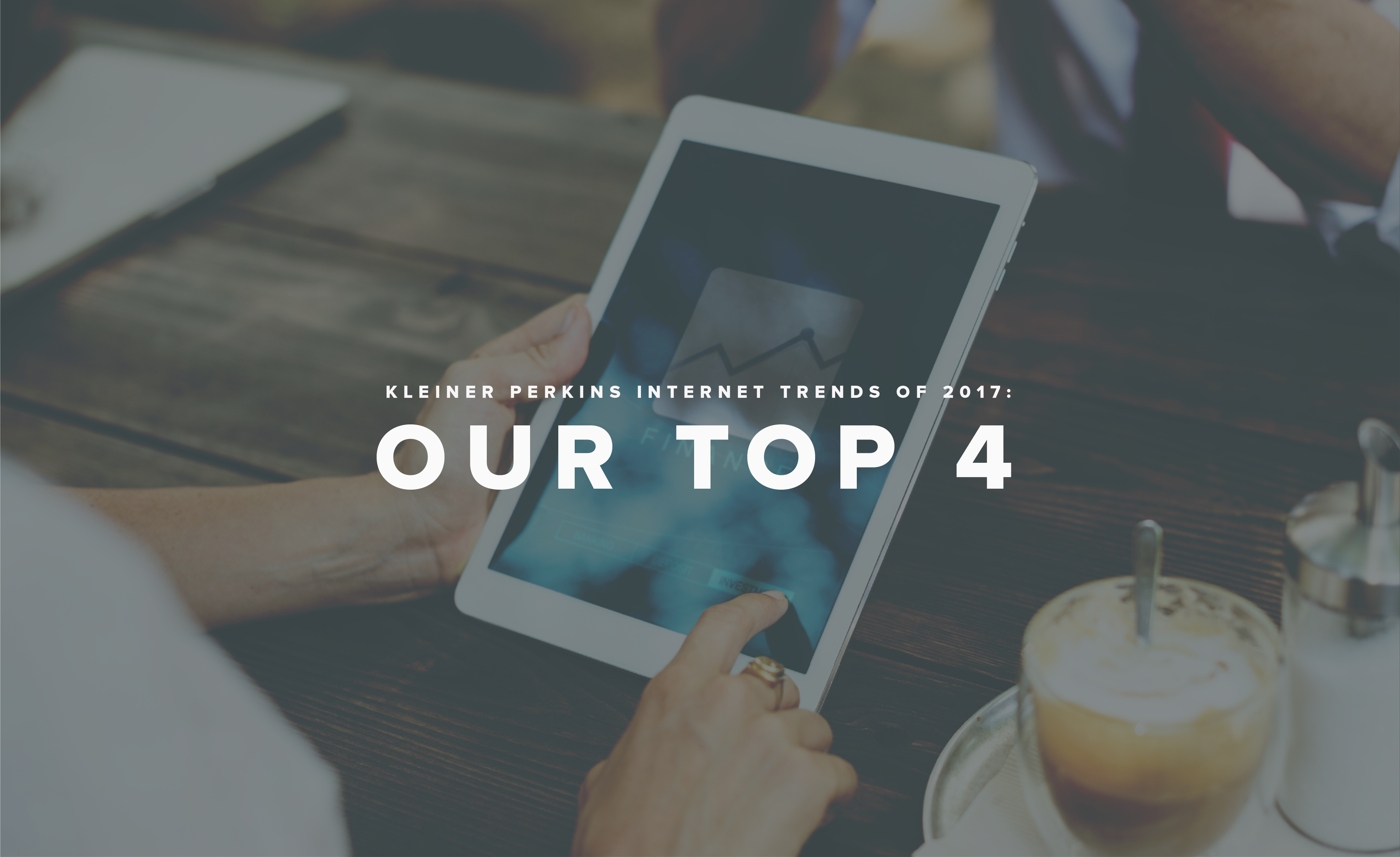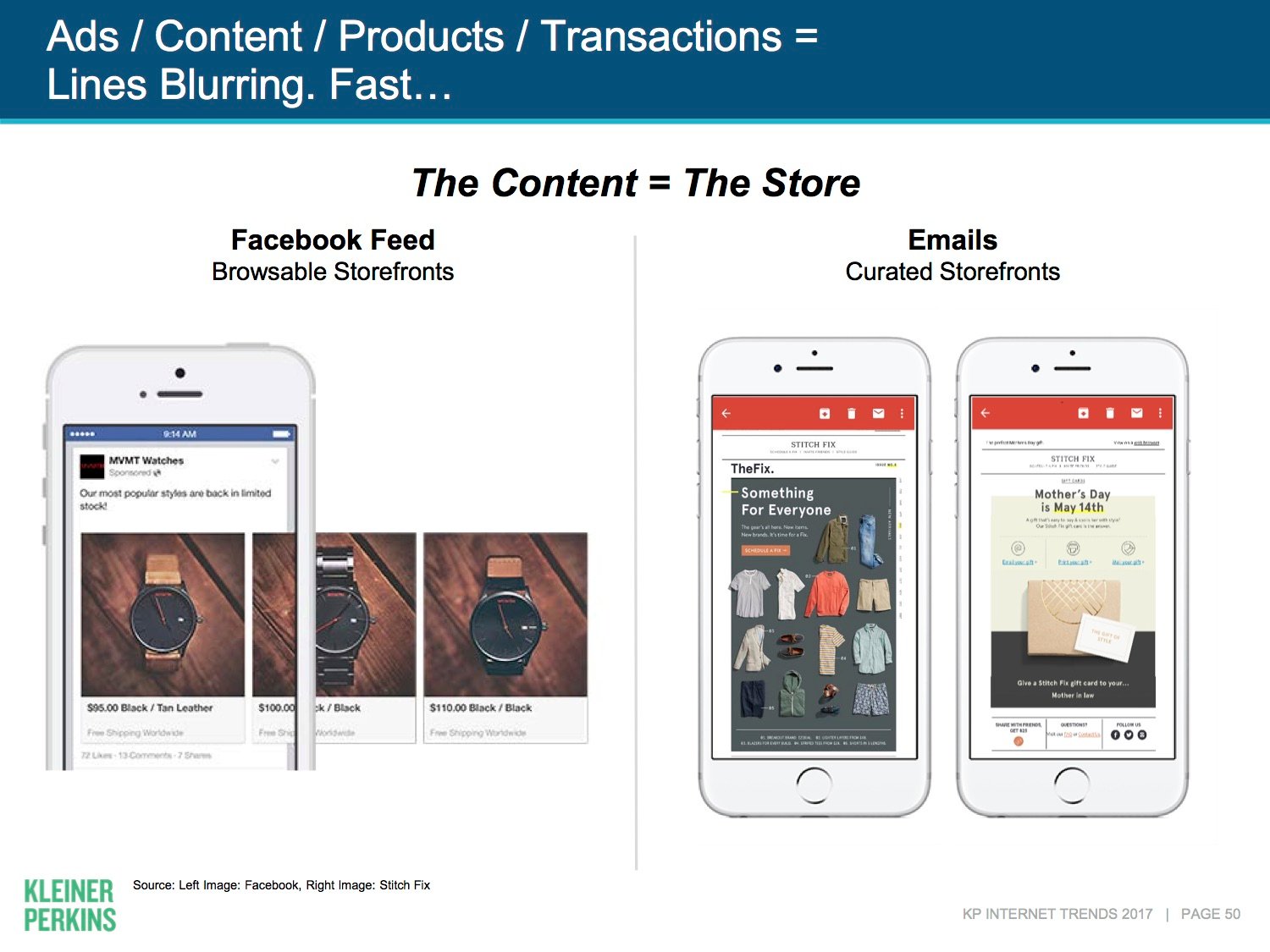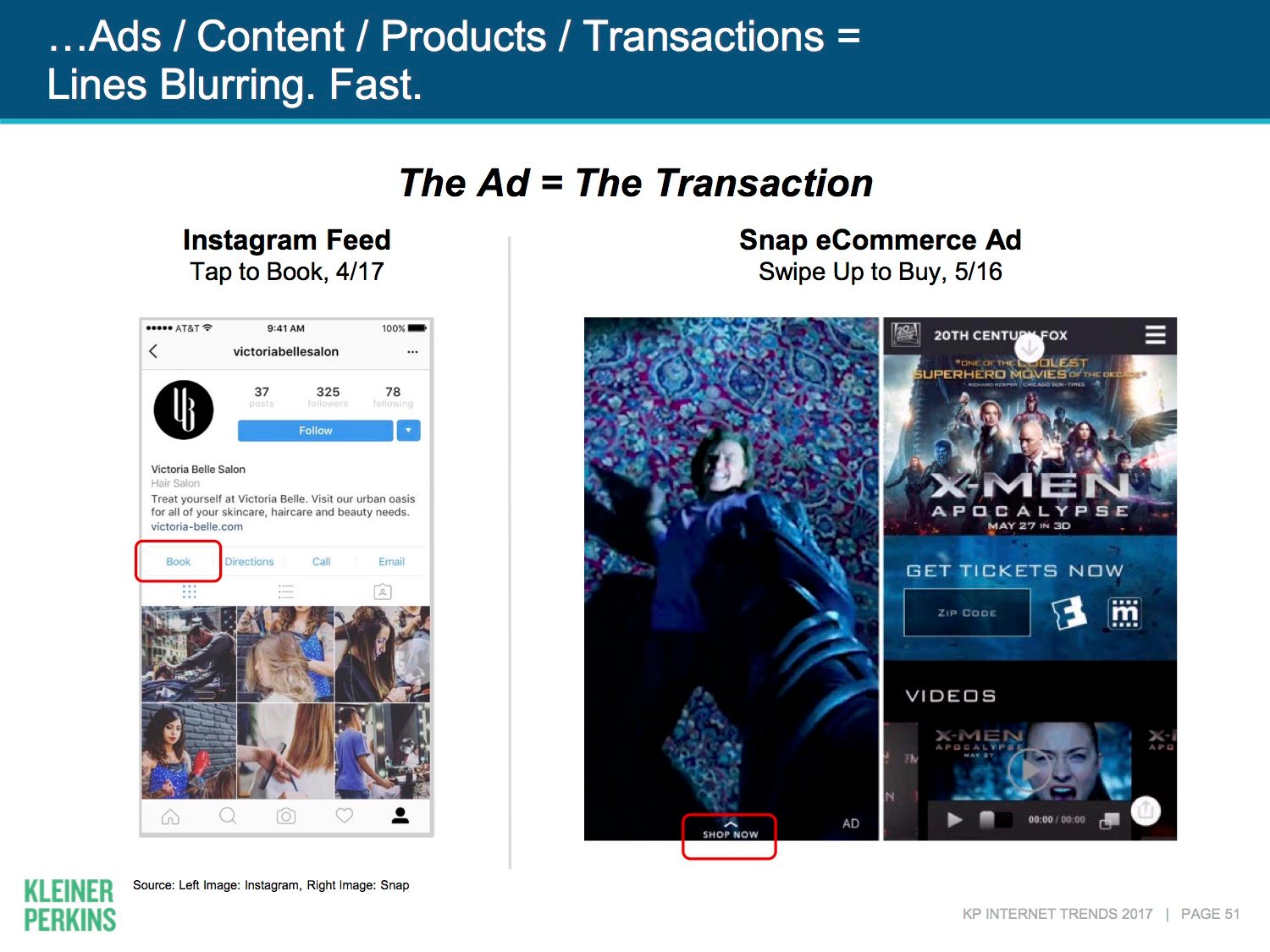
See why top ecommerce brands use Miva’s no-code platform to run
multiple stores, manage massive catalogs, and grow their revenue.
The Internet’s abuzz about Apple’s WWDC keynote, but we’re still reeling over the rapid-fire Internet Trends presentation from Kleiner Perkins Caufield & Byers. Delivered by partner Mary Meeker, the “most anticipated slide deck in Silicon Valley” dove into 355 slides of data affecting business, ecommerce, consumer behavior, and the global marketplace.
Here are the top four most buzzed-about Kleiner Perkins Internet trends and what they mean for your business:
“A lot of the future of search is going to be about pictures instead of keywords.” -Ben Silbermann, Founder and CEO of Pinterest
The most innovative retailers and brands are finding ways to make images, video, data, and algorithms serve up relevant content. Now images are replacing words as the driver of all advertising and ecommerce, even on the back-end.
What this means for you: Where privacy was once an issue, your target customer now has no problem sharing their location or information—if you provide a way to make their lives better. Understanding your customers, from their daily patterns to how they’d like to interact with your brand, will help you provide real value worth subscribing to long-term.
Consumers are adopting rapidly to voice-based search over typing. As the Internet Trends report shows searches in natural, conversational, language on the rise, content too must evolve.
What this means for you: When it comes to search, consumers don’t care how it’s accomplished—they just want answers fast. With the rise in search by voice, which takes place in “human” language, consider how findable the content on your site truly is.
When social media platforms began serving up ads they became the new-age publishers—with a kick. More than traditional media, platforms like Facebook and Instagram can serve highly targeted advertisements, mining data from every “like”, “share”, “comment”, and reaction to user content.
According to the Internet Trends report, ads are evolving into targeted storefronts, where the content is the store and the ad is the transaction. The 4-panel Facebook ad entices users to swipe left to discover product while emails personalize product selection. High-quality media have taken place of irrelevant pop-ups, inciting a transaction within the app itself.

Facebook serves up ads as browsable storefronts, while emails utilize personalization to deliver curated storefronts.

Advertisers deliver advertisements as high-quality content, with social media platforms enabling transactions from the app itself.
What this means for you: Shying away from high-value content marketing is no longer an option. As shown by the Content Marketing Institute:
Interactive games. They’re the “motherlode” of tech product innovation and evolution, as well as modern learning. Even entrepreneurs Elon Musk (Tesla & SpaceX), Reid Hoffman (LinkedIn), and Mark Zuckerberg (Facebook) swear by it.
“If you want to see what business leadership may look like in three to five years, look at what’s happening in online games.” -Byron Reeves, Professor of Communication, Stanford University
With 2.6 billion gamers today versus 100 million in 1995, global interactive gaming is rapidly evolving. But it’s still in its infancy, as Mary Meeker stated in the Internet Trends report.
Interactive gaming is becoming way more dynamic with real-world simulations and is influencing multiple industries. For example:
What this means for you: As interactive gaming innovates tech product across industries, its implications for ecommerce remain to be seen. On one hand, interactive gaming has mined troves of data collection, analytics, simulation, and engagement. Kleiner Perkins even posed the question: “Could it be the evolution, growth, and usage has prepared society for the ongoing rise of human-computer interaction?”
And yet, don’t forget the human side of the “human-computer” equation. Virtual and augmented reality have the industry abuzz. But in the words of Danial Dashtizad, Creative Director at Miva:
“VR and AR should complement the brand experience. But don’t forget why users are choosing your brand. That’s your story: what you represent, and the experience you’re providing.”
Now that’s one trend that won’t fade with the times.
No worries, download the PDF version now and enjoy your reading later...
Download PDF Miva
Miva
Miva offers a flexible and adaptable ecommerce platform that evolves with businesses and allows them to drive sales, maximize average order value, cut overhead costs, and increase revenue. Miva has been helping businesses realize their ecommerce potential for over 20 years and empowering retail, wholesale, and direct-to-consumer sellers across all industries to transform their business through ecommerce.
Visit Website